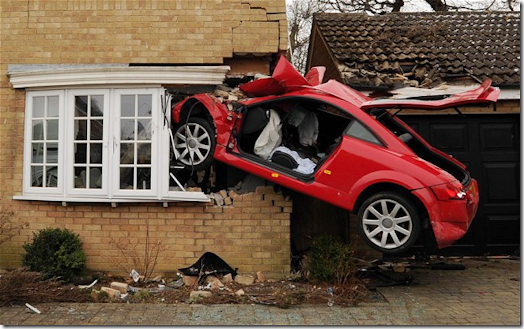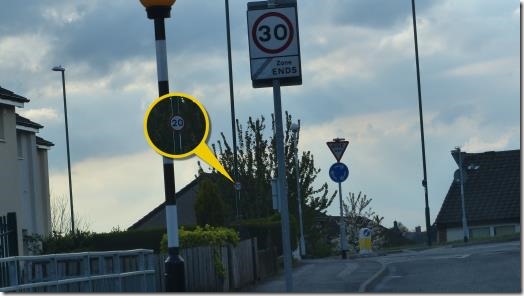 A DVSA alert came through yesterday informing us that they’re investigating the possibility of introducing graduated driver licences (or something along those lines). Again.
A DVSA alert came through yesterday informing us that they’re investigating the possibility of introducing graduated driver licences (or something along those lines). Again.
First of all, let’s look at the facts surrounding this news (i.e. what’s actually in it, and not what the media headlines are saying).
- They’re only exploring the possibility. It won’t happen anytime soon.
- There will be a consultation before – and if – any changes are made.
- They are talking about new drivers’ “first few months on the road”.
- They don’t know exactly what – if anything – will be introduced.
- “New drivers” means everyone, and not just 17 year olds.
- Any changes would be for future new drivers.
- The impetus for this comes from the Government, and not DVSA per se.
Don’t forget that it took over 40 years to get learners able to go on the motorway, and even in my time as an ADI there were numerous “nearly” moments within different governments. Even the final kickstart took over two years to implement.
So why is the issue of graduated licences coming up once again?
Data show that 20% of new drivers have a significant accident within the first 12 months of passing their test, and it is that statistic which is being addressed. However, if we look at separate data, which has been reported many times previously, there is an enormous blip in the accident statistics where the following points are identified from individual cases of those involved:
- 17-25 year old
- male
- rural road
- on a bend
- at night
- more than one occupant in the same age group
- excessive speed involved
- no other vehicle involved
If you translate this data, it basically means young show-offs with little experience driving too fast for their skill set, distracted by their mates, and whipping the wheel round to take a bend they only saw as they entered it, then spinning off into a tree or field. Frequently, at least one passenger is fatally injured. Although males feature highly in these figures, females are still represented, where the distraction is often slightly different but equally stupid. This whole scenario is why insurance is so high for that age group.
It comes down to inexperience. Inexperience of driving, and inexperience of self-preservation. And whether you like it or not, it applies to more 17 year olds than it does 40 year olds – a) because there’s more of them, and b) 17 year olds are more likely to exhibit behaviours which compound their inexperience. The whole issue is about actual accidents and actual deaths. It’s not some random game to moan about because you think your son or daughter is an angel and shouldn’t be treated in a manner that you consider to be unfair.
I’ve mentioned this before, but many years ago I had what was then my best ever pupil. He was a smart lad, from a wealthy (-ish) family, high-achiever at school, pleasant (as was the whole family), and a quick learner. He was an excellent driver when he passed his test first time after only 23 hours of lessons. And he promised me he’d drive safely.
His mum wanted him to do Pass Plus, because she was concerned at his lack of experience – a sentiment I readily agreed with because he’d passed so quickly. Six weeks later – during which time he’d been driving in the beaten-up little Fiesta his mum had bought him – I was amazed at how far he’d drifted away from what I’d taught him. He was cornering too fast and taking chances when crossing the path of other traffic. I pulled him back during the Pass Plus and left him with some words of wisdom once it was completed.
Sometime after, I began teaching his then girlfriend, who his mum had referred to me. The girlfriend told me that he had already damaged his car by hitting a kerb cornering too fast (he hadn’t told me that), and that when he was out with his mates he would drive very fast, sometimes over 70mph in 30mph zones (he didn’t tell me that, either). I was concerned for her, but she said he’d never do it with her or with his mum in the car, because his mum would kill him if she knew. And I can promise you that he was in no way unique. Some of those I’ve taught since have made it absolutely clear how they’re going to drive when they pass. And they do.
And that’s why something has to be done. Far too many young people behave like this as a matter of course. They know full well they are in the wrong (which is why they hide it), but they do it nonetheless because it gives them street cred with the other monkeys in the jungle, and is the next best thing to sex for a 17 year old. Being inexperienced doesn’t enter the equation as far as they’re concerned. It’s no use pretending that your little darling doesn’t do it, because he or she almost certainly does to some extent. I even saw an ADI making this claim. Quite frankly, if a teenager is in rebellion mode – as many are – being the offspring of an ADI might even increase the likelihood of them behaving like prats.
So although I think DVSA isn’t addressing the root of the problem, it is at least trying to deal with the possible outcomes of that problem. Any restrictions placed on new drivers would at least give them time to gain some experience before they’re let off the leash, and the testosterone (or oestrogen) is able to kick in fully.
Not all young people are dangerous
Potentially, yes they are. They are inexperienced, and that alone is enough to lead to errors of judgment. Bad behaviour just compounds it.
When I was younger, going skiing every year was risky and fun, and resulted in a broken collar bone the first time I did it through going too fast when I was still crap. I discovered that snow-ploughing at speed (i.e. as fast as possible) over moguls on a glacier in Verbier with almost no surface snow down a black run is actually not as good an idea as I had originally thought. At the time, having the entire lift system shut down so mountain rescue could get me off the glacier and to the hospital, then being temporarily disabled and off work for a few weeks when I got back was a badge of honour. These days (and as soon as the following year, in fact), I would see it as bloody dangerous and wouldn’t be that stupid again – even though I’m a much better skier. Being unable to drive and off work now would be a royal pain in the ass, and enormously embarrassing. That’s what maturity and experience does to you.
It’s unfair to penalise only young people
They’re not. They are talking of penalising all new drivers. The fact that younger drivers would be most affected is a statistical thing, as is the fact that 20% of new drivers have a significant accident in their first year of driving.
I see older drivers driving more dangerously
That’s a separate issue. The one being addressed here is lack of experience.
My son (or daughter) doesn’t drive like that
This makes me laugh. Yes they bloody well do! Inexperience, by definition, applies to all new drivers. Furthermore, unless you are with them every time they drive, you haven’t got a clue what they get up to. I’ve lost count of the times some prat (often with “P” plates on) has pulled out in front of me or cut me up, and the only reason there hasn’t been an accident is because of my anticipation and reactions (both as a driver, and as an ADI using the dual controls). Those drivers could easily be your son or daughter. You have no knowledge of it and no control over it whatsoever. In my opinion, coming out with this statement is one of the contributing factors as to why there is a problem in the first place (along with letting them have an Audi or BMW as their first car).
Actually, that’s another thing. The only reason anyone buys an Audi (or BMW) is to drive fast, so a new driver who gets one is not going to be sticking to the speed limit or driving cautiously. The only time you’re likely to be stuck behind one being driven slowly is when the driver is texting or pissing about with the stereo. The rest of the time, they’ll be trying to get in front. You can argue as much as you want about that, but it is a simple fact. I see it every day.
 Last December (2017), the driving test was changed to include use of a satnav, and two of the harder manoeuvres were replaced with two that my cat could do. From June 2018, learners will – at long last – be allowed to take lessons on motorways (with an instructor, and not with mum, dad, or best mate Kyle/Kylie).
Last December (2017), the driving test was changed to include use of a satnav, and two of the harder manoeuvres were replaced with two that my cat could do. From June 2018, learners will – at long last – be allowed to take lessons on motorways (with an instructor, and not with mum, dad, or best mate Kyle/Kylie). This
This 
